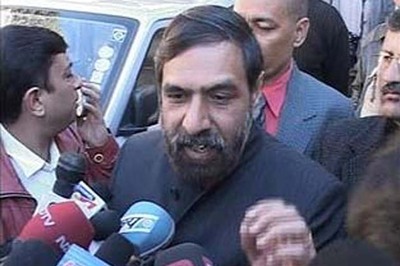
views
Yamagata: Japan reached out on Friday to the US for help in reining in the crisis at its dangerously overheated nuclear complex, while the UN atomic energy chief called the disaster a race against the clock that demands global cooperation.
At the stricken complex, military fire trucks sprayed the troubled reactor units for a second day, with tons of water arcing over the facility in desperate attempts to douse the units and prevent meltdowns that could spew dangerous levels of radiation.
"The whole world, not just Japan, is depending on them," Tokyo office worker Norie Igarashi, 44, said of the emergency teams at the plants.
Last week's 9.0 quake and tsunami in Japan's northeast set off the nuclear problems by knocking out power to cooling systems at the Fukushima Dai-ichi plant on the northeast coast. Since then, four of the troubled plant's six reactor units have seen fires, explosions or partial meltdowns.
The unfolding crises have led to power shortages in Japan, forced factories to close, sent shockwaves through global manufacturing and triggered a plunge in Japanese stock prices.
"We see it as an extremely serious accident," Yukiya Amano, the head of the UN's International Atomic Energy Agency, told reporters on Friday just after arriving in Tokyo. "This is not something that just Japan should deal with, and people of the entire world should cooperate with Japan and the people in the disaster areas."
"I think they are racing against the clock," he said of the efforts to cool the complex.
One week after the quake and tsunami - which left more than 6,500 dead and over 10,300 missing - emergency crews are facing two challenges in the nuclear crisis: cooling the reactors where energy is generated, and cooling the adjacent spent fuel pools where used nuclear fuel rods are stored in water.
Both need water to keep their uranium cool and stop them from emitting radiation, but with radiation levels inside the complex already limiting where workers can go and how long they can remain, it's been difficult to get enough water inside.
Water in at least one fuel pool - in the complex's Unit 3 - is believed to be dangerously low, exposing the stored fuel rods. Without enough water, the rods may heat further and spew out radiation.
"Dealing with Unit 3 is our utmost priority," Chief Cabinet Secretary Yukio Edano told reporters.
Edano said on Friday that Tokyo is asking the US government for help and that the two are discussing the specifics.
"We are coordinating with the US government as to what the US can provide and what people really need," Edano said.
A defense ministry officials said that a US military fire truck was standing by to help supply water to the crippled reactor units, though the official, speaking on condition of anonymity because he was not authorized to speak to the media, said the vehicle would be driven by Japanese workers.
On Thursday, military helicopters dumped thousands of gallons of water from huge buckets onto Unit 3, and also used Japanese military trucks normally used to extinguish fires at plane crashes.
Televised footage of the air drops showed much of the water blowing away in the wind, and officials announced on Friday they were discontinuing the helicopter missions. But the trucks again began spraying water.
The fire trucks allow emergency workers to stay a relatively safe distance from the radiation, firing the water with high-pressure cannons.
Meanwhile, tsunami survivors observed a minute of silence on Friday afternoon at the one-week mark since the 9.0-magnitude quake, which struck at 2:46 p.m.. Many of them were bundled up against the cold at shelters in the disaster zone, pressing their hands together in prayer.
Low levels of radiation have been detected well beyond Tokyo, which is 140 miles (220 kilometers) south of the plant, but hazardous levels have been limited to the plant itself. Still, the crisis has forced thousands to evacuate and drained Tokyo's normally vibrant streets of life, its residents either leaving town or holing up in their homes.
The Japanese government has been slow in releasing information on the crisis, even as the troubles have multiplied. In a country where the nuclear industry has a long history of hiding its safety problems, this has left many people - in Japan and among governments overseas - confused and anxious.
"I feel a sense of dread," said Yukiko Morioka, 63, who has seen business dry up at her lottery ticket booth in Tokyo. "I'm not an expert, so it's difficult to understand what's going on. That makes it scarier."
At times, Japan and the US - two very close allies - have offered starkly differing assessments over the dangers at Fukushima. US Nuclear Regulatory Commission Chairman Gregory Jazcko said on Thursday that it could take days and "possibly weeks" to get the complex under control. He defended the US decision to recommend a 50-mile (80-kilometer) evacuation zone for its citizens, wider than the 30-mile (50-kilometer) band Japan has ordered.
Crucial to the effort to regain control over the Fukushima plant is laying a new power line to the plant, allowing operators to restore cooling systems. The operator, Tokyo Electric Power Co., missed a deadline late on Thursday but said on Friday that workers hoped to complete the effort in 10 to 15 hours, said nuclear safety agency spokesman Minoru Ohgoda.
But the utility is not sure the cooling systems will still function. If they don't, electricity won't help.
President Barack Obama appeared on television to assure Americans that officials do not expect harmful amounts of radiation to reach the US or its territories. He also said the US was offering Japan any help it could provide.
Police said more than 452,000 people made homeless by the quake and tsunami were staying in schools and other shelters, as supplies of fuel, medicine and other necessities ran short. Both victims and aid workers appealed for more help, as the chances of finding more survivors dwindled.
At the Fukushima Dai-ichi plant, a core team of 180 emergency workers has been rotating out of the complex to minimize radiation exposure.
The storage pools need a constant source of cooling water. Even when removed from reactors, uranium rods are still extremely hot and must be cooled for months, possibly longer, to prevent them from heating up again and emitting radioactivity.




















Comments
0 comment